Companion planting is a practice with roots throughout history as farmers and gardeners developed planting patterns to improve the growth and health of their crops. This article on eggplant companion planting addresses various plants that do well when grown with eggplants.
Successful companion planting protects your plants from pests and ensures a healthy yield when it is time to harvest.
Native Americans used companion planting to grow corn, pole beans, and squash together so that each plant benefited from another. This concept exists today for home growers, but if you’re looking to boost the health and growth of just one plant, continue reading to find out what plants grow best with eggplants.
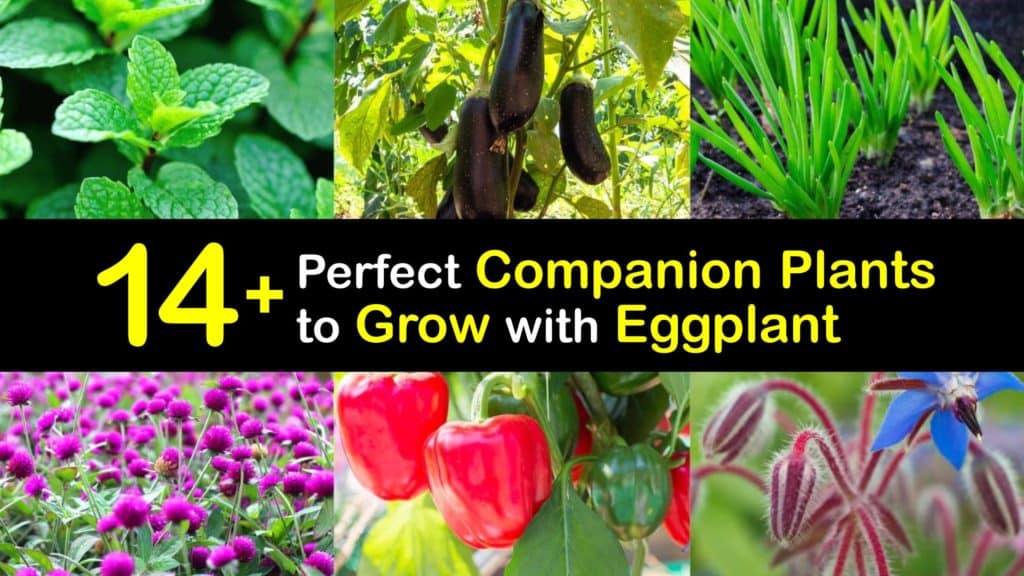
- The Basics of Eggplant Companion Planting
- What to Plant with Eggplant Crops
- What to Avoid When Companion Planting for Eggplants
- The Best Plants for Eggplant Companion Planting
- Onion (Alium cepa L.) – Pest Repelling Companion Plant
- Peppers (Capsicum)
- Potato (Solanum tuberosum)
- Lettuce (Lactuca sativa): Ground Cover for Eggplants
- Garlic (Allium sativum)
- Cabbage (Brassica oleracea var. capitata)
- Mint (Mentha): Repels Insects from Eggplant
- Borage (Borago officinalis)
- Nasturtium (Tropaeolum)
- Marigold (Tagetes): Companion Trap Crop
- Broccoli (Brassica oleracea var. italica)
- Oregano (Origanum vulgare)
- Spinach (Spinacia oleracea): Retain Soil Moisture around Eggplants
- Thyme (Thymus vulgaris)
- Amaranth (Amaranthus)
The Basics of Eggplant Companion Planting
Companion planting involves selecting plants that benefit the growth of your eggplants and do not suffer from growing close to them. The function of your companion plant determines the type of plant you should grow to address a need in your garden.
What to Plant with Eggplant Crops
When looking for what to grow with eggplant, it’s essential to understand what eggplants need to thrive and what the eggplant growing stages are. Plants that require similar growing conditions are an excellent place to start when looking for companion plants.
Eggplants are high-maintenance plants because of their need for lots of sunlight and for requiring more nutrients than what soil alone provides. A good companion plant can’t compete with eggplants for nutrients or block the eggplant leaves from getting sunlight.
What to Avoid When Companion Planting for Eggplants
Some poor choices for different types of eggplant companion planting include tomato plants, as they require the same nutrients to grow. Avoid corn plants as their tall stalks and ears may block sunlight from reaching your eggplant. To avoid the spread of disease, do not grow a strawberry plant where eggplants grew previously.
Other heavy feeders include Brussels sprouts, pumpkins, and melons, while plants like fennel harm nearby plants with a substance it secretes from its roots. Kohlrabi also feeds on the same nutrients in the soil and may cause competition when growing near eggplants.
The Best Plants for Eggplant Companion Planting
Eggplants are self-pollinating crops; a good wind is all they need to pollinate and produce fruit. Eggplant is ready to pick when it is firm and the size stated on the seed packet. Sometimes it is necessary to cut one open to determine ripeness.
Some companion plants attract pollinators or other beneficial insects that feed on pests. The best companion plants also improve soil quality, provide ground cover, or improve the taste of your eggplant. These are essential traits to look for when selecting plants for eggplant companion planting.
Onion (Alium cepa L.) – Pest Repelling Companion Plant
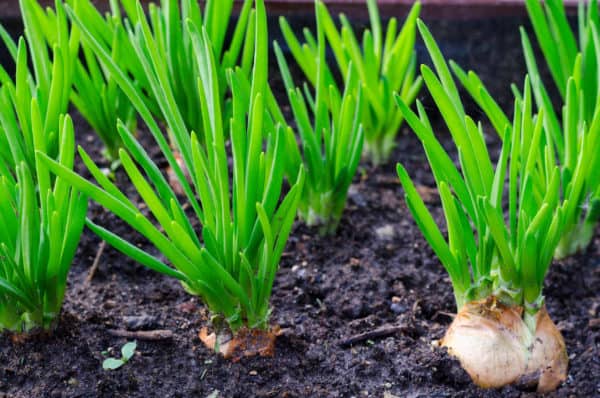
Onions are known for their distinct and intense smell when cut and cooked. While not always pleasing to humans, pests hate this smell, and it causes them to avoid it in the garden. Growing eggplant alongside onions ensures a level of protection from common pests like cabbage moths that damage the leaves or fruit of your plants. You can plant it with onions and garlic to yield virtually the same pest-repellent benefits.

Plant seeds in early spring to allow your onions to germinate and grow by the end of spring. As temperatures begin to rise, plant your eggplant seeds.
Peppers (Capsicum)
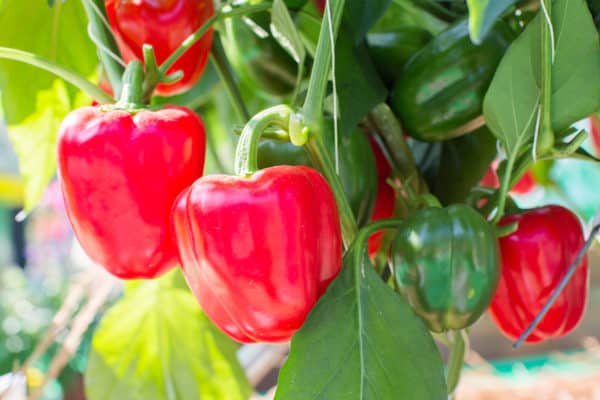
Since bell peppers require the same growing conditions as eggplants, bell peppers are great companion plants for eggplant. Sowing their seeds creates a compatible companion plant in the garden. Peppers thrive in warmer growing conditions, making growing them simultaneously with eggplants at the end of spring ideal.
Hot peppers feed on the same nutrients as eggplants, so if your soil is optimized to grow eggplants, your peppers should thrive. Hot peppers also prevent fungus in the ground that causes Fusarium infections.
This fungus infects plants and causes wilt for solanaceous (nightshade) crops. Pepper plants are susceptible to the same pests; any companion crops provide pest protection that benefits your peppers as well.
Potato (Solanum tuberosum)
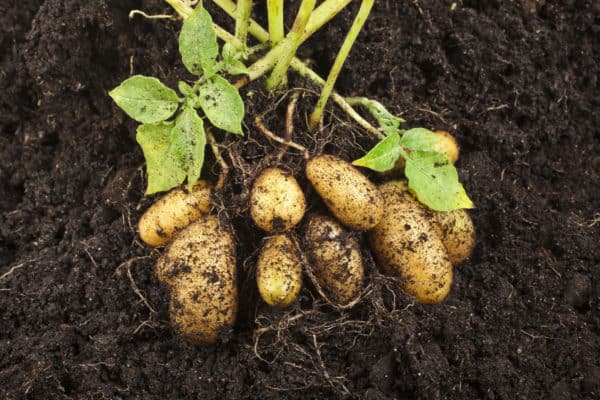
Potatoes are unique options when looking for eggplant companions because they are tubers. Unlike most other companion options, potatoes grow underground, and help loosen compact soil.
Eggplants grow deep root systems that reach up to 50 inches, with most of their growth remaining in the first 18 inches of soil. Growing potatoes next to eggplants provides a companion plant that loosens the dirt, helps with drainage and ensures the ground is adequately aerated for proper eggplant growth.
The downside to growing plants like potatoes near eggplants is that a common pest, the Colorado potato beetle, feeds off both of these nightshade plants. By adding the right companion plants around your eggplant, you can protect it from harmful insects like this beetle.
Lettuce (Lactuca sativa): Ground Cover for Eggplants
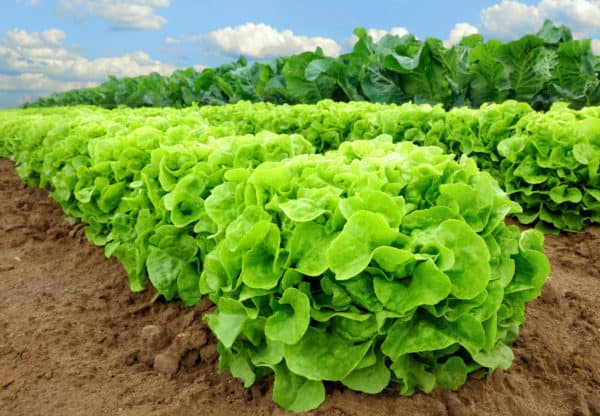
Grasses are usually the best way to provide ground cover and fill space in the garden, but plants like lettuce that grow low to the ground are a perfect way to provide ground cover for your vegetable garden without wasting space on grasses.
Ground cover is essential to protect your soil and prevent erosion, block sunlight from allowing weeds to grow, and help retain soil moisture. On top of these benefits, by growing lettuce, you’ll have another crop to harvest once it reaches maturity.
To keep constant ground cover, you’ll need to plant more lettuce seeds, or your garden will be without protection after harvest.
Garlic (Allium sativum)
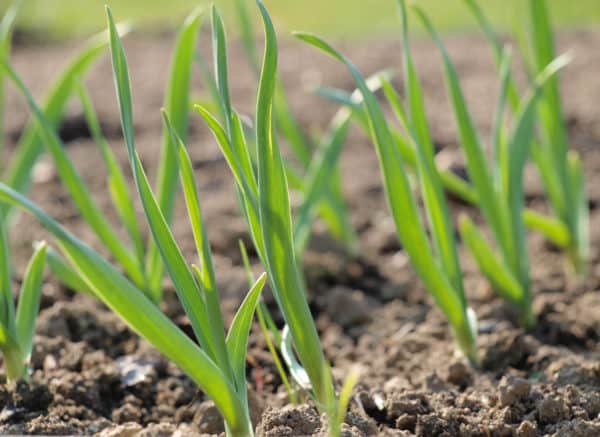
Like onions, garlic is known for its potent smell. Adding eggplant companions like garlic to the garden is an excellent way to create a barrier for your crops to keep insects away as the odor repels them. Plant garlic next to eggplant in the garden as a repellent for mosquitoes, Japanese beetles, spider mites, and tree borers for nearby fruit trees.
Plant garlic in the fall after the summer harvest for most growing zones. This timing means that your garlic won’t be ready for harvest until the start of summer the following year but that it is growing simultaneously with your eggplants to provide protection.
Cabbage (Brassica oleracea var. capitata)
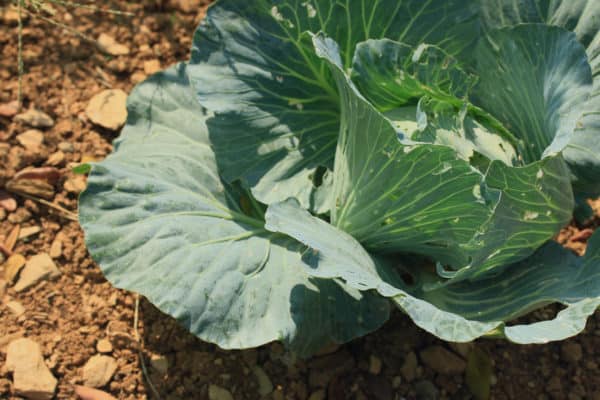
If you decide to grow cabbage near eggplants, prepare for your cabbage to become a trap crop. Common bugs like flea beetles target either crop, but studies show they prefer to eat cabbage leaves instead of eggplant if there is a choice between them.
Each year or growing season, perform crop rotation to prevent disease buildup in the soil. This rotation also allows crops to grow in soil previously boosted by another plant. Plant cabbage family members in plots where legumes grew last season as cabbage crops thrive in soil fixed with nitrogen from beans.
Mint (Mentha): Repels Insects from Eggplant
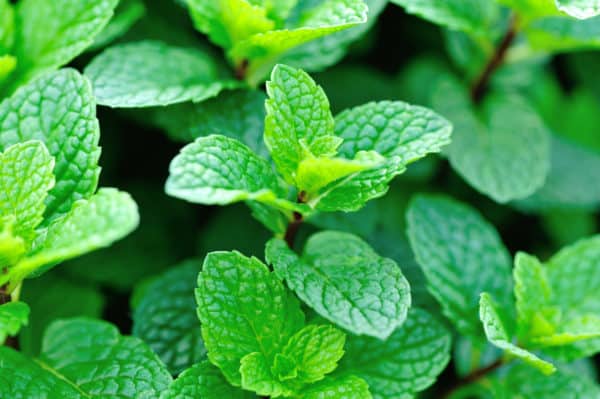
Not every plant that deters pests with its odor has to smell bad to humans. Mint is a perfect addition to the garden as it keeps spiders and flies away, as well as other pests like ants, mosquitoes, and mice.
Plant mint in the spring, following the last frost of the season to allow your mint to begin growing before your eggplant seeds sprout. Mint also has the unique benefit of improving the flavor of eggplants they grow near. Monitor the growth of your mint plants as they can quickly become an invasive species of plants if left unchecked.
Borage (Borago officinalis)
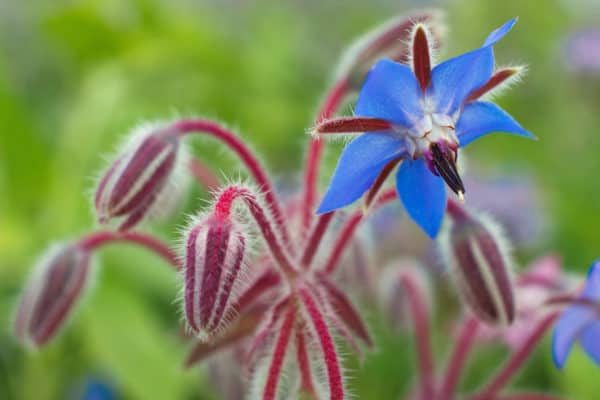
Also known as a starflower, borage herbs grow edible purple flowers that stand out among the green leaves in your garden. While some grow borage specifically for their flowers, the borage seed oil is a helpful product of this plant.
When it comes to companion planting for eggplants, borage plants draw beneficial insects to the garden, which aids gardeners by pollinating their plants or feeding on harmful insects.
Borage plants also deter some worm species from invading your garden. Pests like hornworms and cabbage worms do not like borage, while wasps and beneficial bees are attracted to the flower.
Nasturtium (Tropaeolum)
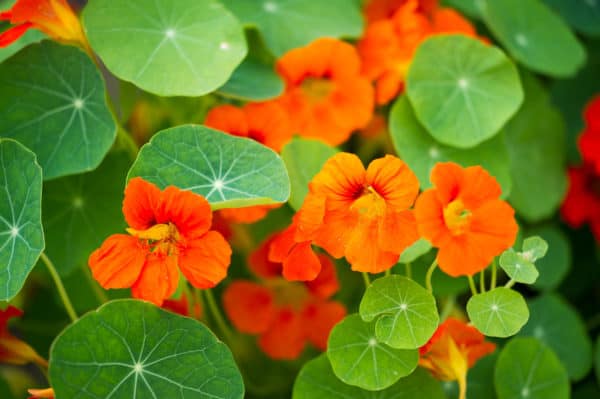
Nasturtium is a type of flower with edible petals. When picked and added to dishes, the petals add a bit of spice to your meal.
Other than adding color to your garden, these flowers repel insects and keep your crops safe from bugs like the Mexican bean beetle. This companion is essential if you are growing bush beans in the garden for the benefit of fixing nitrogen levels.
Compared to companion planting vegetables, nasturtium is chiefly grown as a trap crop for pests like aphids. This trap crop provides pests a source to feed on while leaving your valuable crops alone.
Marigold (Tagetes): Companion Trap Crop
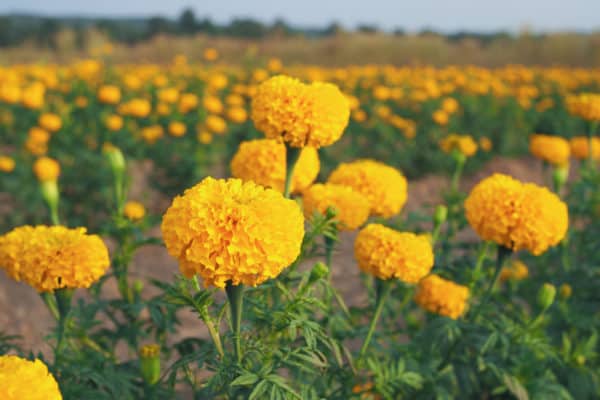
Marigolds are another flower with edible petals once picked. If added to a dish, like a salad, marigold petals add a sweet flavor. When looking for what to plant with eggplant crops, marigold flowers offer protection from common pests like cucumber beetles, cabbage worms, and the carrot fly.
Like nasturtium flowers, marigolds are often grown to act as a trap crop for pests to target. Marigolds add color to the garden and draw beneficial insects like pollinators for other plants.
Broccoli (Brassica oleracea var. italica)
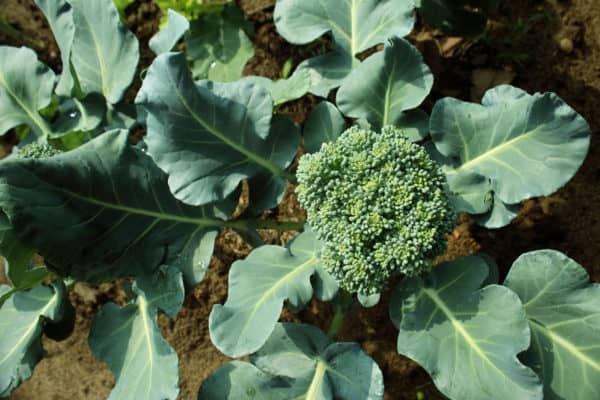
Although broccoli may be a divisive choice for some to include in their garden when looking for what to plant with eggplant, broccoli could be just what your garden needs. Eggplants are heavy feeders, and broccoli plants supply the soil with nutrients to help your eggplants grow.
Because eggplants take so many nutrients from the soil, they may affect the growth of your broccoli. Test your soil or work with the Cooperative Extension in your area to determine if including it is the right choice for your garden.
Oregano (Origanum vulgare)
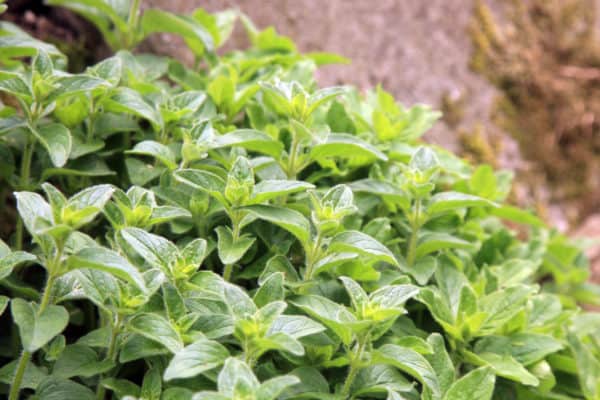
Oregano is a beloved herb and further proof that not every insect-repelling plant has to smell strong. Oregano plants added to your garden help keep bugs like aphids, spider mites, and cabbage moths away with their aroma.
Oregano attracts beneficial beetles like ladybugs and honey bees. Ladybugs are natural predators for aphids, scales, leafhoppers, and mites. If other plants in your garden require the aid of bees for pollination, oregano is a safe and valuable plant to help your plants produce fruit.
Spinach (Spinacia oleracea): Retain Soil Moisture around Eggplants
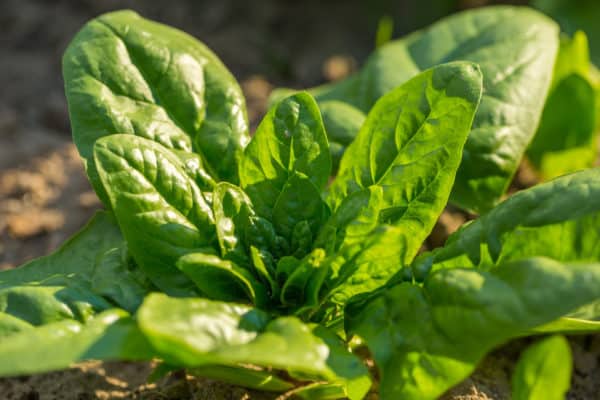
Growing spinach is an excellent way to create a ground cover in your garden, like lettuce. Spinach plants that grow under eggplants benefit from the shade that eggplants provide.
Plant spinach up to six weeks before the last frost in your area. This planting time means that by the time your eggplant seeds are in the ground, you should have enough growth with your spinach plants to provide adequate ground cover from the sun as temperatures rise.
Thyme (Thymus vulgaris)
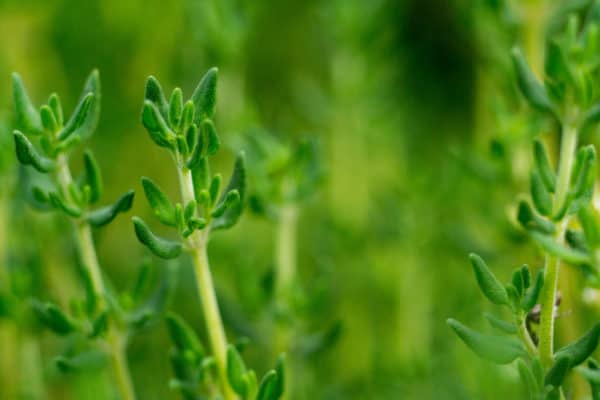
Like other herbs, thyme is beneficial in a vegetable garden for keeping pests away with its smell. Common pests repelled by thyme include garden moths, corn earworms, and cabbage moths.
Thyme grows low to the ground and works well as ground cover on top of protecting your garden from pests. Unlike other perennials, thyme does not spread as much and fills out more slowly than other herbs.
Plants in the garden also benefit from the insects that thyme plants attract. These beneficial insects include honey bees, which are essential for pollination for some plants.
Amaranth (Amaranthus)

Amaranths are perennial plants grown worldwide for various purposes. Some species are grown as ornamental plants, others as vegetables, and others as cereal grains.
When added to your vegetable garden, these plants add a pop of red-purple color. Amaranth plants also protect your garden from pests while attracting pollinators like bees and butterflies.
Beetles often frequent amaranth plants, and these bugs may feed on other insects in the garden to protect eggplants. Many other eggplant companion plants grow well near amaranth, like peppers, potatoes, and peas.
Companion planting is a process refined throughout years of trial and error for the benefit of maximizing the productivity of your garden.
For more information on what plants will thrive best in your garden and growing zone, we suggest referencing a complete companion planting chart or your local Cooperative Extension to determine what grows best in your growing zone.
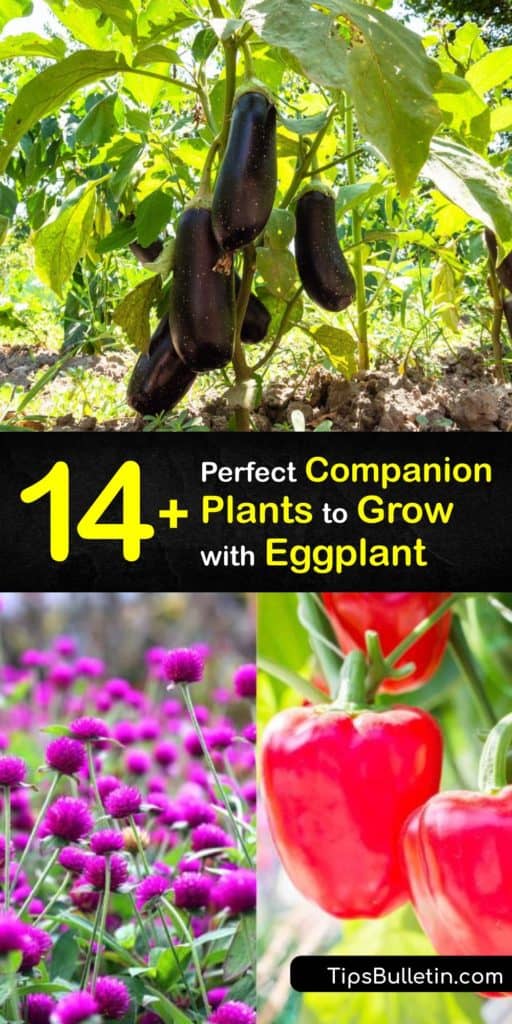
If our eggplant companion planting guide was helpful, please share our suggestions for companion planting for eggplants on Facebook and Pinterest with your friends.